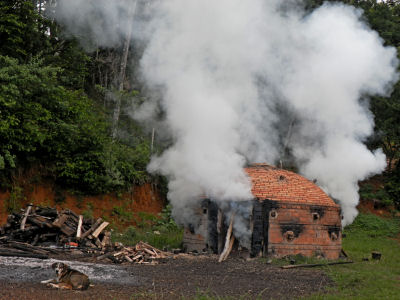|
Strona archiwalna!
Ta strona zawiera treści archiwalne, które nie były zmieniane po 23 września 2019 r. Jeśli chcesz wiedzieć więcej zapoznaj się z deklaracją dostępności
|
||||||
archiwum
 2006 2006
 2008 2008
 2010 2010
 2012 2012
 2014 2014 |
||||||

| ||||||
 |
 |
|||||

|
||||||
| strona główna założenia regulamin kalendarium wskazówki pobierz jury rejestracja zgłoszone projekty galeria gallery | archiwum kontakt | |||||
Description popularizing the research project Open-air museums and ethnographic parks have their unmistakeable charm. The rooms smelling of old wood are filled with objects known from illustrations in history books and, much more seldom, from grandparents' stories. It often turns out that different nations decorated similar items in different way. That is how ethnographers distinguish communities which lived in the past as neighbours but in a completely different way. Basing on the artefacts, photographs, buildings, it is possible to pinpoint old diasporas surrounded by native communities. The most precious are meetings with descendants of the settlers. They often treasure precious heirloom , documents, old photographs, costumes and items of sentimental value which characterise their ethnicity. Abstract Human beings are characterized by the desire to tame the space where they are located. When a human selects an area of the settlement, they modify the natural landscape to suit their needs. This phenomenon is clearly-seen in the case of colonization "in cruda radice" - the territory without any traces of human presence. We had to deal with this type of process in the case of populating the interior of Brazil in the 19th and 20th century. Polish peasants migrating from their fathers' land in search of prosperous and free life were an important "colonization ele-ment" . Since 1911 emigrants from Lublin, Chelm, Zamosc and the southern region of Podlasie came to the newly founded federal colony Cruz Machado in Parana. The aim of the study is to document indicated cultural landscape, today - more than a hundred years after the arrival of the first immigrants. Research questions arise. Does the area currently stand out from neigh-bouring areas? If so, what is it? Is it noticeable only in the material elements? How important are non-material aspects of the space (names, beliefs and practices)? It is truly the idea of the "Little Poland" hidden in the area of subtropical climate? The research is based on the method of fieldwork (two expeditions: 2013-14 and 2015), which are characteristic for ethnography. They rely mainly on the recording selected stretches of space: the architectural objects (houses, farms, churches, roadside crosses, buildings; industrial, rural, and commercial premises and services, buildings of social institutions, etc.), together with the lands transformed for agri-breeding, as well as places culturally or historically important for the local Polish community. More information about the topography is provided by the residents of the area in the inter-views when they name, explain and present their spatial ideas. An important element of the research is to observe the behaviour in space. When analyzing the cultural landscape the exist-ing sources: archival photographs, museum exhibits, artistic productions, are helpful . Today, there is no way to ignore materials placed on the Net (websites of local institutions, blogs, film records, activity on social media profiles).
|


|
|||||












